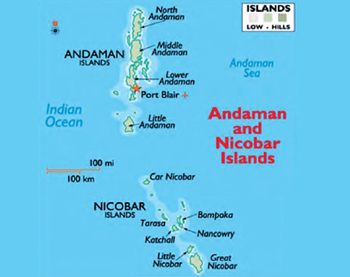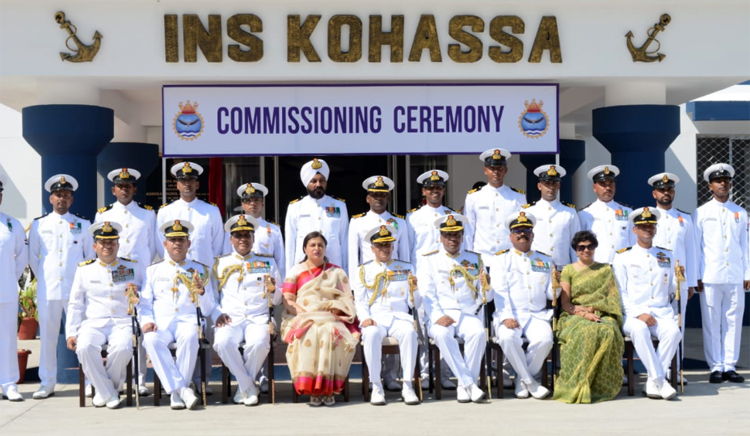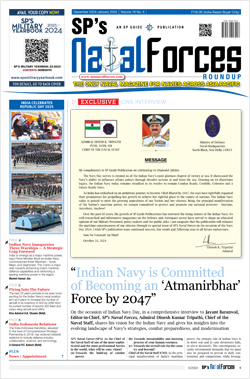INDIAN ARMED FORCES CHIEFS ON OUR RELENTLESS AND FOCUSED PUBLISHING EFFORTS

The insightful articles, inspiring narrations and analytical perspectives presented by the Editorial Team, establish an alluring connect with the reader. My compliments and best wishes to SP Guide Publications.

"Over the past 60 years, the growth of SP Guide Publications has mirrored the rising stature of Indian Navy. Its well-researched and informative magazines on Defence and Aerospace sector have served to shape an educated opinion of our military personnel, policy makers and the public alike. I wish SP's Publication team continued success, fair winds and following seas in all future endeavour!"

Since, its inception in 1964, SP Guide Publications has consistently demonstrated commitment to high-quality journalism in the aerospace and defence sectors, earning a well-deserved reputation as Asia's largest media house in this domain. I wish SP Guide Publications continued success in its pursuit of excellence.
- MoD initiates comprehensive review of Defence Acquisition Procedure 2020, pushes for defence reforms
- G7: The Swansong
- Kalinga Connect: South Asia to Polynesia
- Advanced MRSAM for India for a greater firepower
- Must Credit DRDO for Operation Sindoor, now what is next for defence R&D?
- Operation Sindoor | Day 2 DGMOs Briefing
- Operation Sindoor: Resolute yet Restrained
Fortifying Andaman & Nicobar
 |
The Author is Former Director General of Information Systems and A Special Forces Veteran, Indian Army |

Media reports of January 27 state government has "virtually finalised" a 5,650 crore military infrastructure development plan for Andaman and Nicobar Islands (ANI) over a 10-year period. The term "virtually finalised" indicates there is still time before it is finally approved, which hopefully will not be too long. The plan reportedly caters to stationing more warships, aircraft, drones, missile batteries and infantry in the archipelago. The news report goes on to say that the plan has also been reviewed by the Defence Planning Committee (DPC) and the initial plan was pegged around 10,000 crore but had to be pruned down – to focus only on land that is already under acquisition by the Andaman & Nicobar Command (ANC). It can therefore be deduced that only 50% of what was planned is getting approved. Could this be looked at from the prism of national security, enlarging China threat and strategic importance of ANI? Hastening land acquisition can hardly be problematic when land from military cantonments is being acquired by the government all over the country?

Leaving the land acquisition to ANC obviously means endless hiccups but surely, a push by the government can provide the right impetus to implement the original plan involving 10,000 crore. This will then be in synch with force accretion plan of the Armed Forces at the ANC by 2027 under consideration, which reportedly is pegged at 5,370 crore and would include adding one more infantry battalion to the existing two infantry and one Territorial Army (TA) battalion. Accretions are also planned by way of air defence, signals, engineers, supply and other units. Night flights to Port Blair began only in 2015. In April 2016, a guided-missile corvette, INS 'Karmuk', was stationed at ANI.
Incidentally, the earlier infrastructure development package (2015-2025) approved for ANI costing $1.5 billion includes plans to double the number of naval patrol craft to 32 and army personnel to 6,000. After years of wrangling, construction of a new missile test facility on Rutland Island was approved by the government in mid 2017. Located 20 km south of Port Blair, Rutland Island falls in the South Andaman administrative district. Presently, long-range missile tests are conducted off the Odisha coast and are tracked by naval vessels on a trajectory into the Bay of Bengal. Most of the long-range tests for missiles like Agni IV and V have to be tracked over sea, with specialised vessels noting the 'hit zone' into the water. The missile test facility on Rutland Island will assist in confirming accuracy of the long-range missile hits. In June 2018, government took a decision to permanently station fighter jets in the ANI, something that should have happened years back. News reports said deployment of frontline fighter jets is under consideration for deployment at two bases in ANI – one each at Car Nicobar and at Campbell Bay. IAF already has a base at Car Nicobar but ANI has only one Mi-17V5 unit and two Dornier aircraft permanently stationed. Apart from the two existing major airports at Port Blair and Car Nicobar, runways at the naval air stations at Shibpur (recently commissioned as INS Kohassa by the Naval Chief) in the north and Campbell Bay (INS Baaz) in the south will be extended to 10,000 feet to support operations by larger aircraft. Another 10,000-foot runway at Kamorta island is also envisaged as part of the 10-year infrastructure development.
The ANC importantly also provides security cover to India's 5.95 lakh sq km exclusive economic zone (EEZ) in the region. Significantly, India has no maritime boundary disputes with any county of Southeast Asia. Taking cue from China's militarization of the SCS and feverish activities in the IOR, we should have taken steps to optimise the strategic advantage of ANI much before. China is going full steam in establishing and fortifying naval bases in the IOR and its nuclear submarines are periodically docking in Sri Lanka and Pakistan. As per reports of January 2018, she has developed a new underwater surveillance network to assist submarines get a stronger lock on targets, which includes deployment in the Indian Ocean. PLA Navy (PLAN) forays in the IOR are on the increase and Chinese marines are already stationed at Gwadar and Djibouti. PLAN has deployed SRBMs, underwater drones and has successfully mounted electromagnetic rail-gun on warships. From her naval bases in Djibouti and SCS, China has also been firing lasers at US pilots. In comparison, India's fortification of the ANI is very slow despite the Andaman & Nicobar Command (ANC) having been established in 2001 in accordance recommendations of the Kargil Review Committee (KRC) and the follow up Group of Ministers (GoM) reports, which devoid of adequate muscle, continues to look over its shoulder at mainland India. While Chinese marines are already deployed in the IOR, our Navy's case for a Marine Brigade is stagnating in MoD for the past two decades. Indian Naval Marines would also relieve some of the pressure on the Army's Infantry facing problems of turnover especially in counter insurgency areas, particularly by infantry regiments responsible for contributing manpower to Rashtriya Rifles units. We need to go full hog to not only beef up the defence potential of ANI but operationalise it as a 'springboard' for operations to nullify threat to our national interests. If the political will is there, finding the finances should not be any problem. The ANI also needs to transformed into a major international transshipment hub with the ANC having adequate muscle; replete with adequate number of frontline fighters and surveillance aircraft, ships, nuclear submarines, amphibious aircraft, marines, underwater defences and the like. Fortifying ANI fully should be a top national priority.





